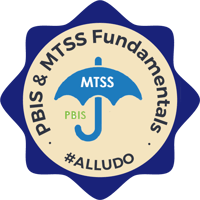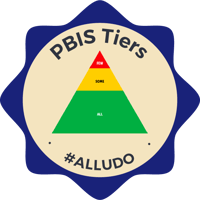Quick Tip Wednesday: How to Set Up a Gratitude Month
Welcome back to Quick Tip Wednesday!
6 min read
Julia Francis : Apr 26, 2022 5:00:00 PM
/What%20Is%20a%20Multi%20Tiered%20System%20of%20Supports%20and%209%20Examples%20of%20MTSS%20(1).jpg)
The task of the modern educator is not to cut down jungles, but to irrigate deserts. ~ C.S. Lewis
The one thing that all school districts have in common is a desire to improve student outcomes. District goals are designed to promote ideal outcomes and ideally, professional development should play a role, giving teachers the data they need to support students.
At Alludo, we believe that teachers are most likely to succeed when they have training and information to help their students. We'll also introduce you to the rich MTSS learning content curated in the Alludo Content Catalog and built by leading school districts nationwide. In this post, we’ll explain what MTSS is, how it differs from PBIS, and give you nine examples of MTSS.
Let’s start by defining multi-tiered systems of support. Simply stated, MTSS is a multi-level, team-driven framework that is designed to encourage data-based problem-solving at every level and create a school climate that supports students.
At the core of MTSS is a system of partnering that involves every level of education, including teachers, parents, school administrators, district leaders, and even state officials. The goal of MTSS is to collect meaningful data at each of these levels and use the data to make decisions that will benefit students.
When we break down MTSS, it should do all of the following things:
/AL_07-Blog05-2.jpeg?width=450&name=AL_07-Blog05-2.jpeg)
Since MTSS is data-driven, it’s essential to build a framework that streamlines data collection and allows your district and state to easily crunch the numbers to use in problem solving and decision making.
In any MTSS framework, there are four key components that must be present if the system is to be effective.
The first key component of MTSS is student screening. Screening is essential because each student has individual needs that must be met. A robust screening process should identify at-risk students who might be in need of extra support, including academic support as well as social, emotional, and behavioral support.
Screening should be conducted at least three times each year. In addition to identifying at-risk students, screening can also help to identify patterns in learning and achievement; this data can be used to improve curricula and address district-wide issues.
Since the goal of MTSS is ultimately to protect at-risk students by providing them the support they need for positive outcomes, progress monitoring is an essential component to allow everyone in the system to track progress and adjust support as needed.
A robust progress monitoring system should use reliable tools to collect data, evaluate the effectiveness of MTSS instruction and interventions, assess performance, and ultimately, measure how effective the system is at identifying students who need help, responding to their needs, and improving student outcomes.
MTSS is designed to review responsiveness to students at every level, and as such, it must include a multi-level prevention system. Ideally, the system should integrate academic, emotional and behavioral, social, instructional, and intervention supports.
Prevention decisions should be evidence-based as well as being culturally appropriate and linguistically responsive. Students' needs should be addressed through a three-tier system:
Students who are not at risk may need only the first tier of support. As students’ needs increase, additional tiers of support may be necessary.
Finally, data-based decision making is at the heart of MTSS. It should include thorough analysis of all data collected combined with problem solving that’s driven by the data.
Decisions should be made with input from interested parties at all levels in team meetings, and may include choices about classroom instruction, student interventions, implementation, and identification of students with disabilities, in accordance with your state’s laws.
/AL_07-Blog05-3.jpeg?width=450&name=AL_07-Blog05-3.jpeg)
It’s common for there to be some misunderstanding about MTSS and PBIS and the differences between them. Since we’ve already defined and explained MTSS, let’s review what PBIS is and how it relates to MTSS.
PBIS stands for Positive Behavioral Interventions and Supports. It is a school-wide framework that proactively teaches students how they are expected to behave when in school. Positive behavior is strongly incentivized, while behavior that falls short is addressed using a three tier system:
As you might guess from the tiered support levels, PBIS falls under the umbrella of MTSS. Since student behavior plays a key role in the classroom, both for individual students and for the class as a whole, it is essential to have a coherent framework in place to address student behavioral issues both on a preventive basis and individually.
Now, let’s review nine examples of MTSS, including examples from all three tiers of support.
At the core classroom level, teachers can encourage learning and support students by doing the following things.
Most kids need regular, short breaks from learning. Even a quick break can give kids a moment to breathe and their brains time to recharge. Regular timeouts can benefit the class as a whole by giving students time to socialize and refocus.
Some students may be able to finish their work during structured time while others may need a little extra time to get caught up. Allowing students to complete classroom assignments during their unstructured time fosters independence and lets students complete work at a pace that’s comfortable to them.
Any consequences in the classroom should be structured, consistent, and clear. Students feel most supported within a consistent system where they know what’s expected of them and what the consequences will be if they fall short of expectations.
Tier II of MTSS involves small group interventions for students who may need support beyond what’s provided in Tier I. Here are four examples of Tier II support.
Students who struggle to get work done may benefit from daily check-ins and check-outs with a designated staff member. At the check-in, they’ll review work that’s ongoing. Then, they’ll have a scheduled check-out at the end of the day to review student progress and set the student up for success the next day.
/AL_07-Blog05-4.jpeg?width=450&name=AL_07-Blog05-4.jpeg)
Some students who have difficulty structuring their time will need regular feedback from teachers. That may mean one-on-one feedback or breaking students into small groups to provide feedback.
Mentoring is useful because it provides students with more direct support than they would receive in the core classroom support system. It can occur in a group setting or as a one-on-one interaction.
MTSS and PBIS must be flexible to be helpful. A setting-based intervention may be necessary when a student exhibits less-than-desirable behavior.
Finally, there are students who may need intensive, individual support to get to optimal outcomes. Here are two examples.
If group instruction and mentoring doesn’t work, students may need one-on-one instruction to help them grasp concepts and complete their work. This one-on-one time may happen in the classroom if time allows, but it may also include individual time with a teacher or tutor after school.
Every student is unique, so in some cases, teams may need to meet to arrive at individual solutions for students who are struggling.
The Alludo model is designed to allow school districts and administrators to choose the topics and courses that align with district goals while also giving teachers a voice and a choice in what they learn.
We’ve curated a wide array of microlearning activities that include many compatible with MTSS and PBIS. For example, we have a selection of content focused on Social Emotional Learning and how it can benefit their students, as well as content on how to provide tiered support that meets students where they are and helps them reach their full potential.
 |
 |
 |
Best of all, our model comes with built-in data collection, analytics and tracking, so you can implement MTSS and track your results, which in turn, facilitates data-based decision making at every level.
MTSS can help students, teachers, schools, and school districts to work together to improve student outcomes. The key is finding a robust system of professional development that teaches and supports MTSS and provides the data you need to make it work.
Experience personalized learning for all levels of educators with a free trial of Alludo’s professional development platform. You’ll enjoy:
.png)
Welcome back to Quick Tip Wednesday!

Mid-Year Reflection: Your Secret to a Stronger Second Semester
A great way to get your learners engaged in your Alludo program is by keeping the content in your program up-to-date and relevant. Rebecca has...